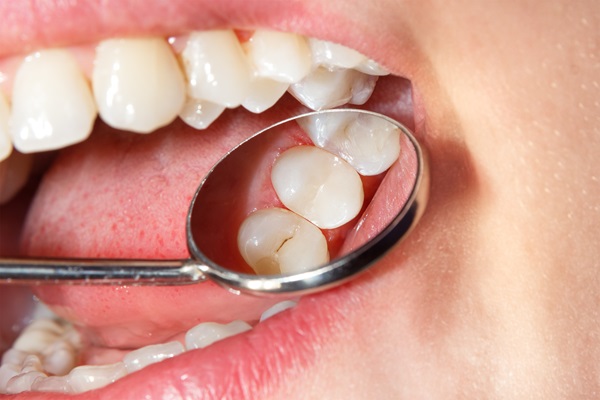How Dental Bonding Is Used in Cosmetic Dentistry

If you are looking to make improvements to your smile, you may want to consider dental bonding. This cosmetic dentistry procedure uses a composite resin material to make repairs to teeth and enhance the appearance of a person's smile. Bonding can be used to correct various cosmetic issues, including chips, gaps, discoloration, and even misshapen teeth. In this blog post, we will explain how bonding is used in cosmetic dentistry and the benefits it can provide.
What is bonding?
Dental bonding is a cosmetic dental procedure using a tooth-colored resin material to improve the appearance of a tooth. The resin is applied to the tooth, shaped and smoothed to match the natural contour of the tooth, and then cured with a light to harden the material.
Bonding can be used to repair chipped, cracked, or discolored teeth, fill in gaps or spaces between teeth, and improve the overall appearance of teeth that are too small or misshapen. The material used for bonding is strong and durable, making it a great option for both functional and aesthetic purposes.
Unlike other cosmetic dental procedures such as veneers or crowns, bonding is a quick and affordable way to improve the appearance of your teeth without the need for multiple appointments. In addition, bonding does not require any removal of healthy tooth structure, making it a minimally invasive option for enhancing the look of your smile.
Who should consider bonding?
Dental bonding is a versatile cosmetic dentistry option that can help improve the appearance of teeth that are discolored, chipped, or cracked. If you are looking for a non-invasive solution to improve the aesthetics of your teeth, then bonding may be the right for you.
Patients who have teeth that are slightly misaligned, but do not require extensive orthodontic treatment, can also benefit from bonding. Additionally, bonding can help patients who have a gap between their teeth or teeth that appear smaller than others in the mouth.
However, it is important to note that bonding is not suitable for everyone. If you have severe decay, advanced gum disease, or teeth requiring extensive restoration, bonding may not be a suitable option. In such cases, your dentist may recommend alternative treatment options, such as porcelain veneers or dental crowns.
Benefits of dental bonding in cosmetic dentistry
Dental bonding is a versatile cosmetic dentistry procedure that can benefit patients in a number of ways. Here are some of the key benefits of bonding:
- Affordable: Bonding is one of the most affordable cosmetic dentistry options available. It typically costs less than veneers or crowns.
- Quick and Easy: Bonding can usually be completed in just one appointment. There is no need for impressions, and the bonding material is applied directly to the teeth.
- Non-Invasive: Unlike veneers and crowns, bonding requires very little removal of tooth enamel. This means that the procedure is minimally invasive and less damaging to your teeth.
- Natural-Looking: Bonding materials are available in a range of shades to match the natural color of your teeth. When applied correctly, bonding can blend seamlessly with your existing teeth.
- Versatile: Bonding can be used to correct a variety of cosmetic dental issues, including gaps, chips, cracks, discoloration, and uneven teeth.
- Durable: While bonding is not as strong as other cosmetic dentistry options, it can last for several years with proper care. Regular brushing, flossing, and dental checkups can help prolong the lifespan of your bonding.
Procedure for bonding
Dental bonding is a relatively simple and painless procedure that typically takes between 30 minutes to an hour per tooth. Here are the general steps involved in the process:
- Preparation: The dentist will start by cleaning the surface of the tooth and roughening it with a special gel or solution. This helps the bonding material adhere better to the tooth.
- Bonding material: Next, the dentist will select a shade of composite resin (a tooth-colored material) that closely matches the color of your natural teeth. The resin is then applied in layers, with each layer being cured or hardened with a special light before the next one is added.
- Shaping and trimming: Once the composite resin has been applied and cured, the dentist will shape and trim it to the desired shape and size. This may involve removing excess material or adding more to achieve the desired result.
- Polishing: The final step is to polish the bonding material to make it smooth and shiny, just like a natural tooth.
After the bonding procedure, you may be advised to avoid certain foods and beverages that could stain or damage the bonding material. With proper care, however, bonding can last several years before needing to be touched up or replaced.
Request an appointment here: https://totalcareimplantdentistry.com or call Total Care Implant Dentistry at (760) 394-3088 for an appointment in our Palm Desert office.
Check out what others are saying about our dental services on Yelp: Dental Bonding in Palm Desert, CA.
Recent Posts
Dental bonding is a common procedure in which the dentist uses a tooth-colored material called resin to fill in gaps and repair cracked or chipped teeth. Though bonding is a safe, low-maintenance procedure, it is not appropriate for all teeth or all patients who need a tooth repaired. When performed correctly, this option is a…
Dental bonding (also known as tooth bonding) is a procedure that involves a dentist applying a tooth-colored resin material to one or more of your teeth and then, hardens it with a special light to repair or improve one’s teeth. The tooth bonding procedure uses resin which is long-lasting plastic material and is cost-effective than…
Dental bonding allows dentists to fix problems such as chipped teeth. You may not know much about the technology used. But it just uses resin, which dries under blue light, to cover small issues with the teeth. The procedure has been around a while, and there is much research behind it. Knowing more about it…
Dental bonding is a quick, effective and straightforward means of enhancing your smile. If you are young, old or middle-aged, do not assume dental bonding will prove ineffective for your age cohort. This smile enhancement has proven successful for patients of all ages who are looking for a tooth restoration that enhances the mouth's aesthetics…


